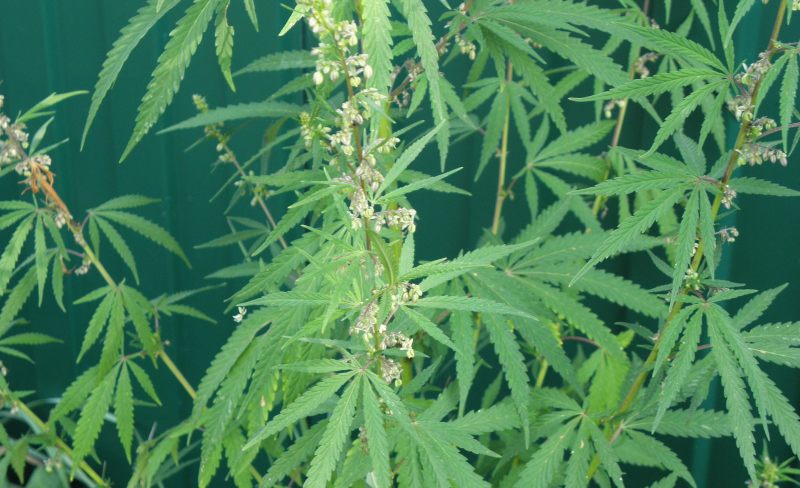Canapa sativa is a significant herbaceous species beginning from Central Asia, which has been utilized in society medication and as a wellspring of material fiber since the beginning of times. This quickly developing plant has as of late seen a resurgence of premium due to its multi-reason applications: it is to be sure a secret stash of phytochemicals and a rich wellspring of both cellulosic and woody filaments. Similarly profoundly keen on this plant are the drug and development areas, since its metabolites show powerful bioactivities on human wellbeing and its external and internal stem tissues can be utilized to make bio plastics and concrete-like material, individually.
In this survey, the rich range of hemp phytochemicals is examined by putting a unique accentuation on atoms of modern premium, including cannabinoids, terpenes and phenolic accumulates, and their biosynthetic courses. Cannabinoids address the most considered gathering of mixtures, essentially because of their wide scope of drug impacts in people, including psychotropic exercises. The remedial and business interests of certain terpenes and phenolic compounds, and specifically stilbenoids and lignans, are likewise featured taking into account the latest writing information. Biotechnological roads to improve the creation and bioactivity of hemp auxiliary metabolites are proposed by talking about the force of plant hereditary designing and tissue culture.
Specifically two frameworks are looked into, i.e., cell suspension and bristly root societies. Also, a whole segment is committed to hemp trachoma, in the light of their significance as phytochemical processing plants. Eventually, possibilities on the advantages connected to the utilization of the – omics innovations, for example, metabolomics and transcriptomics to accelerate the distinguishing proof and the enormous scope creation of lead specialists from bioengineered Cannabis cell culture, are introduced.
Presentation
The current climatic and monetary situation pushes toward the utilization of supportable assets to diminish our reliance on petrochemicals and to limit the effect on the climate. Plants are valuable normal assets, since they can supply the two phytochemicals and lignocellulose biomass. In this survey, we center around hemp Cannabis sativa , since it is a wellspring of filaments, oil and particles and as such it is a meaningful illustration of a multi-reason crop. We treat the perspectives identified with the utilization of hemp biomass and, all the more broadly, those connected to its wide assortment of phytochemicals.
Known since the old occasions for its restorative and material uses, hemp is as of now seeing a recovery, due to its rich collection of phytochemicals, its strands and its rural components, to be specific very acceptable protection from dry spell and bugs, all around created root framework forestalling soil disintegration, lower water necessity regarding different yields, e.g., cotton. This shows the extraordinary flexibility of this fiber crop and empowers future investigations zeroed in on both Cannabis (bio)chemistry and hereditary designing. Hemp assortments creating oil, biomass or even both are at present developed and the accessibility of the hemp genome succession incredibly helps sub-atomic examinations on this significant harvest.
What’s more, mainstream researchers is particularly keen on saddling Cannabis pharmacological force: for instance microorganisms are being designed to create Δ9-tetrahydrocannabinolic corrosive (THCA) and cannabidiolic corrosive (CBDA).
The last extent of this audit is to talk about the capability of hemp for industry and to feature its significance for the bio-economy. All the more explicitly, we: (I) depict the utilization of hemp biomass (i.e., the strands), (ii) talk about hemp particles of mechanical premium (in particular cannabinoids, terpenes and phenolic builds), (iii) portray the capability of hemp trichomes as pharma-industrial facilities and (iv) examine the capability of hereditary designing, by portraying the utilization of plant cell suspension and shaggy root societies.
Points of view and Conclusion
Hemp is a one of a kind flexible plant, which can give high biomass amounts in a brief time frame. Hemp stem is utilized as a wellspring of woody and bast filaments for the development and auto ventures, while hemp seeds are utilized as a wellspring of dietary oil and hemp leaves and blossoms as a wellspring of bioactive parts.
Until this point, in excess of 540 phytochemicals have been depicted in hemp (Gould, 2015), and their pharmacological properties seem to go much past maniacal impacts, with the ability to address needs like the help of chemotherapy-determined queasiness and anorexia, and suggestive alleviation of different sclerosis.
Ceaselessly finding new models of medications is of colossal significance to address the upcoming difficulties as far as general wellbeing (Atanasov et al., 2015). Nature has effectively given an enormous wellspring of new particles and new skeletons.
A new survey detailing the new medications accessible available during the most recent 30 years showed that over 35% of these new medications have an immediate normal beginning. This rate increases to more than 60% in the event that we consider every one of the medications whose construction is propelled by a characteristic pharmacophore (Newman and Cragg, 2012). Cannabis presents a gigantic potential for amplifying the library of bioactive metabolites. Mixtures can be gotten from hemp trichomes, cell suspension societies, furry root frameworks, or through the biotransformation of THCA or CBDA utilizing contagious, bacterial, or plant cells
